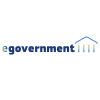The Danish Travel Planner is a digital multi channel service providing user-centric information from all public transport companies and some private entrepreneurs. The aim of the service is primarily to provide better, more accessible and more accurate information to the users of public transport. The service is accessible through the Internet, automated telephone service, mobile Internet and touch screens. The service also helps the public transport authorities reduce resources spent on providing information to their users. The service is nation wide and provides door-to-door travel information for the entire journey independent of which public or private transport authorities are involved. The Danish Travel Plan was officially launched on October 1, 1998, and is today one of the most used webpages in Denmark.
Policy Context
Public transport agreements.Description of target users and groups
The target group is all users of public transport in Denmark, both citizens and businesses, national as well as international. The service have more than 1,8 million unique users per month and more than 6 million journey plans presented per month. The users are widely distributed across different target groups as both young and old, male and female use public transportation.Description of the way to implement the initiative
Rejseplanen is owned by DSB (Danish Railways), Movia (Zealand), Fynbus (Funen), NT (Northern Jutland), Midttrafik (Central Jutland) and Sydtrafik (Southern Jutland). Furthermore Arriva (Railway Company), Metro (Copenhagen metro), Abildskou Busser (private bus company) and a number of ferries provide data to Rejseplanen. Rejseplanen is managed by a board consisting of representatives from the owners. The daily operating and development is handled by a secretariat consisting of about seven people and by representatives from the owners in joint development, marketing and technical operation groups.Technology solution
Rejseplanen is completely digitalised to ensure the maximum effect on saved resources etc. However Rejseplanen still has a multi-channel strategy with the most normal channels available i.e. Internet, phone, mobile, information boards. Furthermore Rejseplanen is a support tool for face-to-face service on for instance stations. The strategy is to provide the same basic service through all channels, but at the same time adjust functionality and service to the limitations and possibilities of that specific channel. This means that some extra functionality is available on the Internet which might not be accessible on mobile phones and vice versa. The Internet solution can for instance send emails with travel plans, provide personal travel plans etc. The mobile solution is focused on a simple interface and easy use of results, but can still show maps like on the Internet. The automated phone service is focused on delivering the result in a useful way and can send this as SMS to the user.Main results, benefits and impacts
Rejseplanen is, as far as we know, the only national door-to-door travel planner in Europe. This provides a service which requires no knowledge of local transport companies etc. It also allows the user to find journeys with different transport companies and is as such a truly user-centric service. On the administrative side the partnership between so many local and national public transport companies is unique. Rejseplanen is the second most used public website in Denmark and is amongst the 15 most used sites both private and public. The usage of the service has increased from approx. 17 million journey requests a year in 2002 to more than 59 million in 2006 and still rising. We have more than 1,8 million unique users a month which is about 1/3 of the entire Danish population. User surveys show that more than 9 out of 10 users travel on the presented travel by public transport. Somewhere between 6 and 13 % of the users would not have travelled by public transport would it not have been for Rejseplanen, which gives a fairly high conversion to public transport from other means of transportation i.e. car etc. This percentage has been climbing since the beginning of Rejseplanen. Furthermore the users of Rejseplanen are very satisfied with the service giving it 4 out of 5 points in user surveys.Return on investment
Return on investment: Not applicable / Not availableTrack record of sharing
The service has influenced the generel way in which public transport in Denmark provide information to the end users.Lessons learnt
Lesson 1 - Good public user-centric eServices often requires both horizontally and vertically collaboration between different levels of public and private partners / authorities and often between partners who in other situations could be viewed as competitors. Lesson 2 - User-centric eServices can only be developed with the users. And in order to get the broadest and best input it is important to use many different sources, such as user surveys, end user groups, professional user input, continuously feedback via mail / phone etc. The users are the only ones who know what they want. Lesson 3 - A multi-channel approach is important in order to reach a broad target group, but it is equally important to adjust the service to the different channels in order to utilise to possibilities of that specific channel. At the same time it is only possible to gain the potential efficiency savings if the more expensive channels such as personal contact are abandoned. Scope: National
Login or
create an account to comment.

